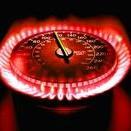Nissan - Ibrido e-POWER e l'obiettivo del 50% di efficienza
Featured Replies
Per Nissan, e-POWER non è solamente la denominazione commerciale del sistema full hybrid adottato nei suoi veicoli, ma è anche il nome di una delle chiavi della strategia di elettrificazione delle suo auto che, assieme alle EV denominate "Zero Emission" e ad altri importanti accorgimenti di contorno (innovazione sugli accumulatori, uso degli stessi come sistemi d'accumulo per le rinnovabili "intermittenti" ed un efficace sistema di riciclo/riuso dei veicoli/componenti a fine vita), condurrà il m
il ruolo della tecnologia e-POWER nel raggiungimento della Carbon Neutrality
Raccomandato da J-Gian








Crea un account o accedi per lasciare un commento